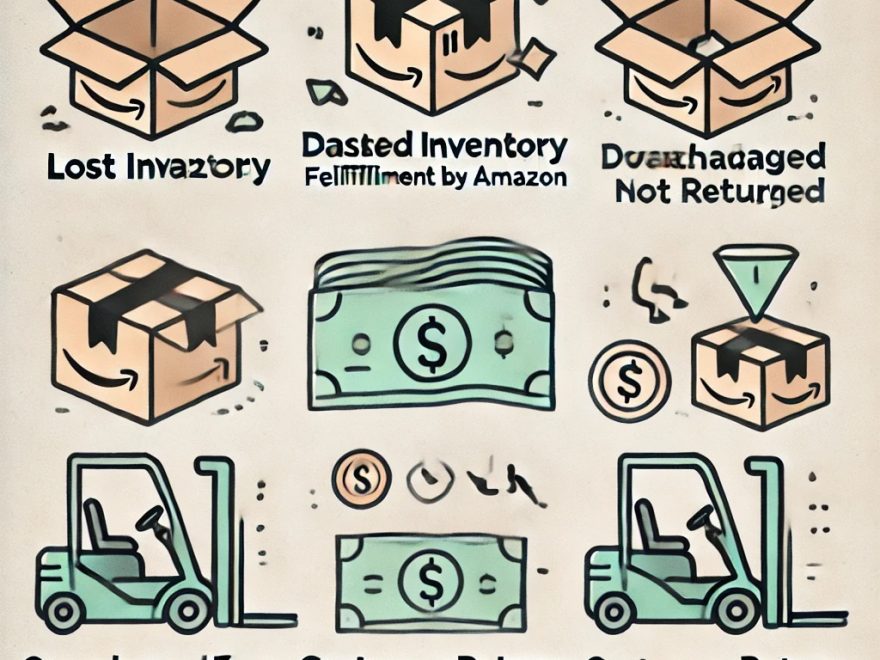Selling through Amazon FBA is super convenient. Amazon handles storage, shipping, returns, and customer service. But as smooth as the system is, mistakes still happen. And sometimes, those mistakes cost you money.
The good news? Amazon is supposed to reimburse you when the error is on their side. But to get that money back, you need to know what qualifies—and what doesn’t.
Let’s break down the most common FBA mistakes that are eligible for reimbursements, so you can make sure you’re not missing out.
- Lost inventory in the warehouse
Sometimes, items just go missing. Amazon’s systems might mark a product as “lost,” but if they don’t reimburse you automatically, you’ll need to raise a case. If they lost it, you deserve to get paid.
This is one of the most common reasons sellers get Amazon FBA reimbursements.
- Damaged inventory (by Amazon)
If your items are damaged while in Amazon’s warehouse or during delivery, that’s on them—not you. You won’t get reimbursed if the customer damages the product, but if Amazon’s team is responsible, you should be.
You can track this in your Inventory Adjustments report.
- Returned but not restocked
Sometimes, a customer returns a product, but it never makes it back into your inventory. Maybe it got lost, maybe it was returned in poor condition—but if Amazon already refunded the customer, you deserve compensation.
You’ll need to check your Returns and Inventory reports to catch these.
- Customer refunded but never returned the item
This one happens more often than it should. A customer requests a refund, Amazon processes it, but the item is never actually sent back. Amazon usually spots this, but not always. If it slips through, you can file a claim.
- Overcharged fees
Amazon charges you based on your product’s size and weight. But sometimes, they get it wrong. If Amazon lists your product as oversized when it’s not, you’ll pay higher storage and shipping fees.
Check your Fee Preview reports to see if you’re being charged correctly. If not, ask for a reimbursement for the difference.
- Reimbursement errors
Ironically, even Amazon’s reimbursements can have errors. You might be given the wrong amount, or the case may be marked as resolved without actually paying you the full value.
Always double-check your Reimbursements report and match it with what you were owed.
- Incorrect removals or disposals
Sometimes you request Amazon to remove or dispose of old inventory, but the process doesn’t go as planned. Items might be lost during removal or not actually disposed of. If your records don’t match Amazon’s, you could be owed money.
Understanding the Amazon FBA reimbursement policy
Now here’s the catch—Amazon won’t pay you automatically for every issue. According to the Amazon FBA reimbursement policy, you must report the error within a specific time window. This can be anywhere from 9 to 18 months depending on the issue.
If you miss the deadline, you lose the chance to get your money back.
Also, you need to provide solid proof. Amazon usually asks for order IDs, SKUs, or evidence from your reports. So, keeping good records is key.
Do you have time to check all this?
Probably not. And that’s exactly why services like Refunzo exist. Instead of spending hours in Seller Central, let experts handle it. They know what to look for and how to file claims that actually get paid.
That way, you stay focused on growing your business—while someone else handles your Amazon FBA reimbursements.
In conclusion
Amazon does make mistakes. Whether it’s lost stock, damaged goods, or wrong fees, you shouldn’t have to pay for errors that aren’t your fault.
Knowing what qualifies under the Amazon FBA reimbursement policy helps you claim back what’s yours. And if you don’t have time to track it all, tools and services like Refunzo are here to help.
Every rupee counts. Don’t let Amazon’s mistakes eat into your profits. Start checking—or better yet, let someone do it for you.

